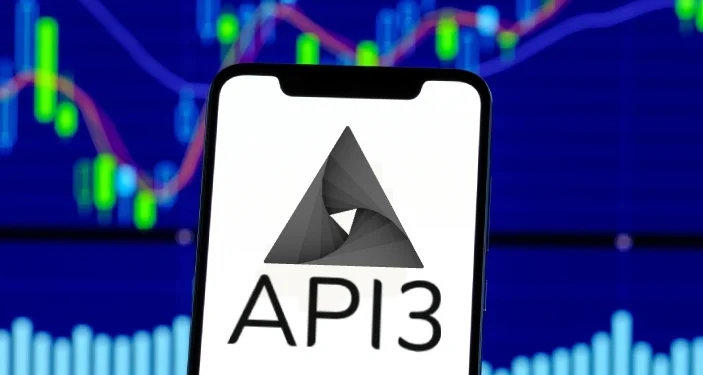API3, a decentralized API network, has seen a massive price rally in the last 24 hours, breaking the previous resistance at $2.50 and reaching a new high of $3.20. Several factors, such as negative funding rates, market-making loans, and technical indicators, drove the rally. However, the price faces a strong resistance at $3.20, which could pose a challenge for reaching the $4 target.

API3 has witnessed a strong rally in the last 24 hours, gaining over 100% in value. As of writing, the API3 price is trading 82% up at $2.90, with a market cap of $260 million. The trading volumes have also skyrocketed by a staggering 3500% to $343 million.
The rally was driven by several fundamental and technical factors that boosted the demand and sentiment for the token. Renowned analyst Sell When Over | 9000.sei (@sell9000) sheds light on some of these factors, such as:
- Negative funding rates: The funding rate is the fee that the perpetual swap traders pay or receive every eight hours, depending on the difference between the spot and the futures prices. A negative funding rate means that the short sellers pay the long buyers, creating an incentive for the buyers to push the price up. According to Sell9000, the current negative funding rate for API3, similar to what was seen with UMA before, makes holding long positions costly, creating a buying pressure for the token.
- Market-making loans: Sell9000 also reveals that DWF, a decentralized fund management platform, has provided a $1.5 million market-making loan to API3, introducing further incentives to boost the price to profitable levels. Sell9000 points out that this loan from DWF comes with an option to purchase tokens within a specified price range, adding an additional element to the market dynamics.
- Technical indicators: From a technical analysis standpoint, the Great Mattsby (@matthughes13) highlights API3’s breakthrough of the previous resistance at $2.50 (white circle) and the establishment of new resistance around $3.20 (yellow circle). This development has facilitated a remarkable 45% surge in API3 price, marked by a significant daily candle.
Despite the positive momentum, challenges may lie ahead for API3. When questioned about the possibility of reaching $4 in the short term, Mattsby acknowledges the potential difficulty in surpassing the resistance at $3.20, identified by the orange horizontal line. The market awaits further developments as API3 navigates these critical levels.
Other factors, such as the overall market sentiment, the competition from other decentralized API projects, such as Chainlink and Band Protocol, and the adoption and innovation of the API3 network may also influence the price of API3.
API3 has recently announced some partnerships and integrations, such as with Polygon, Harmony, and Kyber Network, which could enhance its network effect and value proposition.
The network is one of the most promising projects in the decentralized API space, offering a novel and innovative solution for connecting data providers and users in a trustless and secure way.
The recent price rally has triggered renewed interest among investors eyeing the $4 target in the near term. However, the price faces a strong resistance at $3.20, which could pose a challenge for reaching the $4 target.
About API3
API3 is a cryptocurrency at the core of a decentralized API network designed to enhance web and mobile applications. Traditional APIs, crucial for app functionality and user experience, typically depend on centralized third parties, posing risks like censorship and data manipulation.
API3’s decentralized approach enables direct connection of APIs to the blockchain, eliminating intermediaries. This model offers data providers control over their data’s quality and security while creating monetization opportunities. Users gain access to diverse, high-quality data sources useful in various sectors like DeFi, insurance, and gaming.
Governance of API3 is managed by a DAO, comprising token holders and data providers, who oversee network management and project direction.
The token plays a pivotal role in network staking, governance, and transactions, representing a significant shift towards a more decentralized, secure, and efficient data exchange ecosystem in the digital world.
